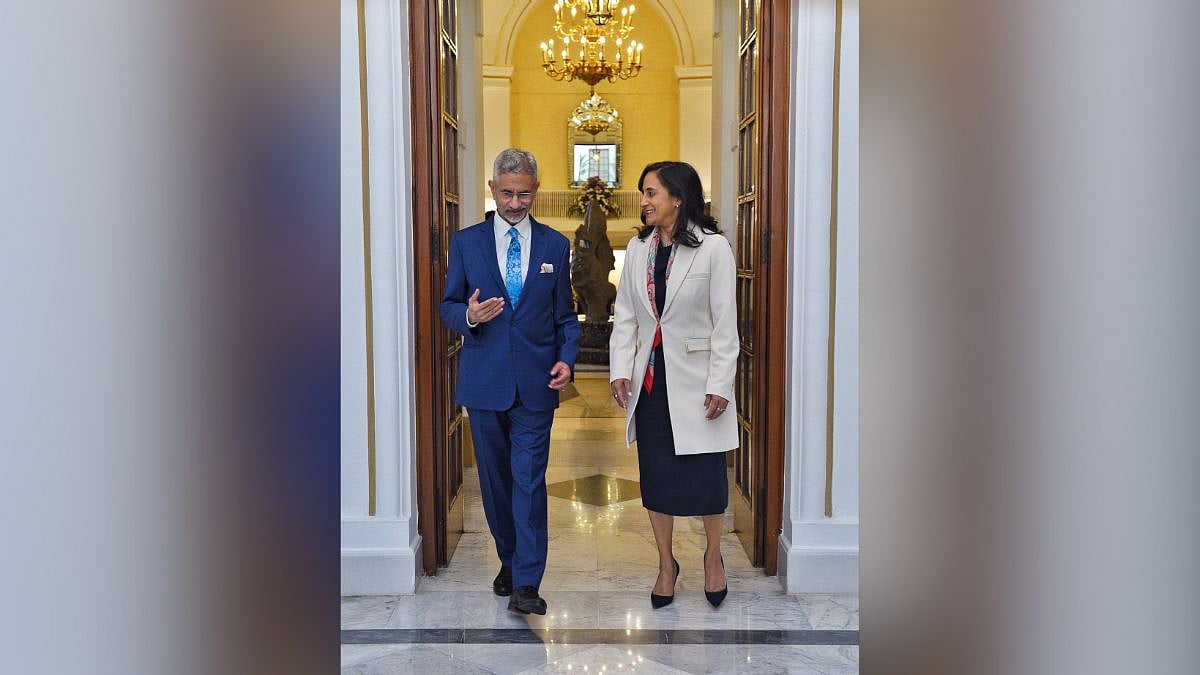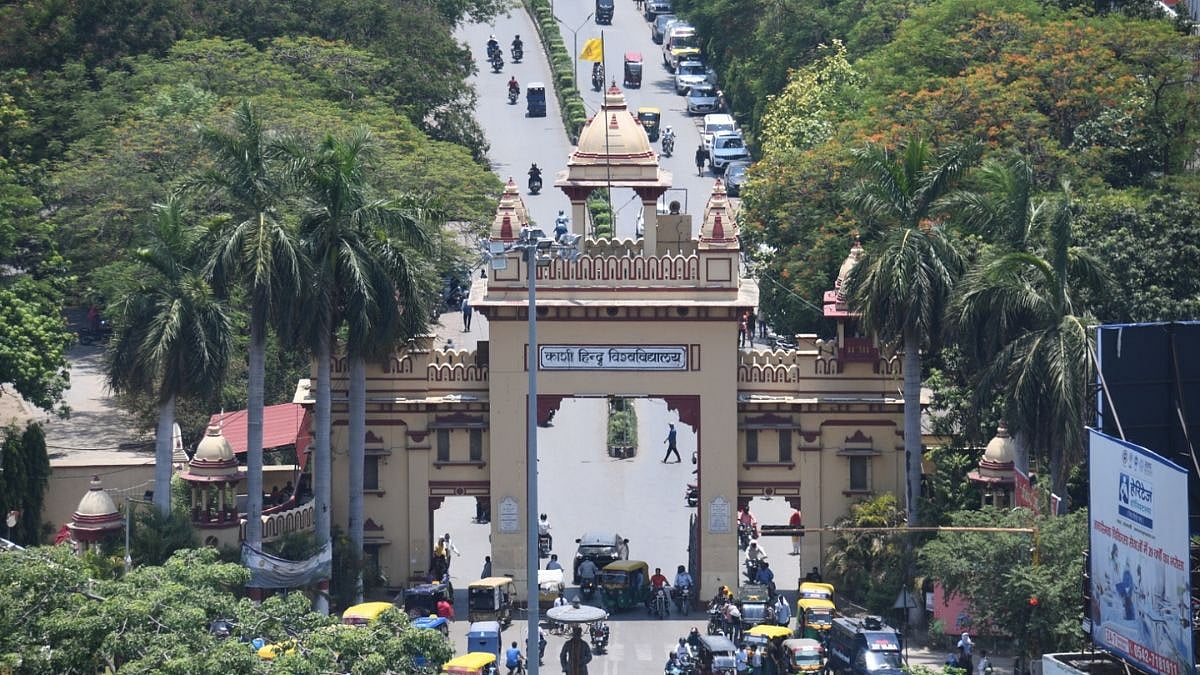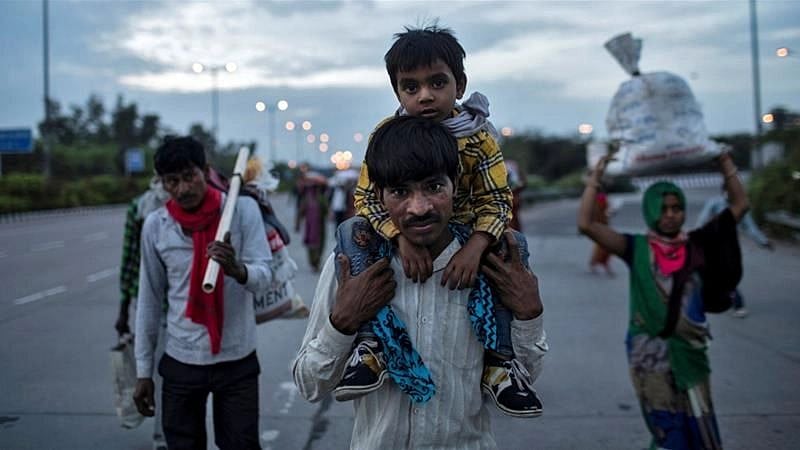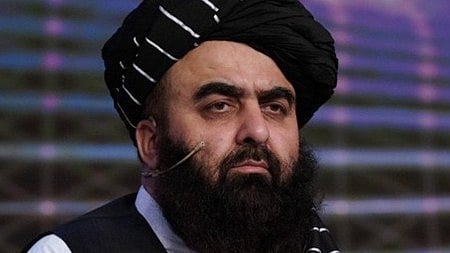The initial challenge in the Bombay High Court, to what now is popular as ‘Maratha reservation’, was to two ordinances of 2014 which were converted into the Educationally and Socially Backward Category (ESBC) Act. One ordinance provided 16 per cent reservation to the Maratha community, and the other provided 5 per cent reservation to 52 Muslim communities. While the Bombay High Court stayed the operation of the ordinance and the Act, Maharashtra legislature based on Justice MG Gaikwad commission’s report passed the Socially and Educationally Backward Category (SEBC) Act in 2018 which was under challenge in the Supreme Court till May this year. But the events that led to the 2018 Act date back to the 50’s.
The Maratha community was generally seen as politically powerful and economically comfortable – a perception supported by the findings of the Kaka Kalelkar Commission (1955) and BD Deshmukh Committee (1964), which did not find the Maratha community backward. Their view was endorsed by the finding of the Second National Commission, popularly known as the Mandal Commission (1979) which also found the Maratha community to be a ‘forward Hindu caste and community’. While considering the request of the Maratha community for inclusion in backward class, Maharashtra State Backward Classes Commission’s detailed report to the National Commission for Backward Classes (1980) also endorsed that the Maratha community was not socially or educationally backward.
Then came the Indra Sawhney judgment. On November 16, 1992, a nine-Judge Constitution Bench of the Supreme Court directed every state government to form a permanent body to examine and recommend requests for inclusion in Backward Class of citizens. Maharashtra Government appointed the Justice RM Bapat Commission which recorded a finding in its 2008 report that Maratha community should not be included in ‘other Backward Class’ (OBC) category. The Maharashtra Government’s request that the position be reconsidered was also rejected by the State’s statutory OBC Commission in 2013.
The next attempt by the State Government to reverse these consistent findings was with the appointment of one more committee chaired by Shri Narayan Rane, then a sitting Minister. This resulted in a report dated February 26, 2014 which recommended Maratha community be granted special reservation in education (Article 15(4)) and in employment under the State (Article 16(4)).
The Rane Committee report led to the two 2014 Ordinances which were eventually converted into Act I of 2015 providing 16 per cent reservation in education and employment under the State. While these Ordinances and the Act were under challenge before the Bombay High Court which had stayed their operation, the State Government made a fresh reference and on November 2, 2017 Justice MG Gaikwad, Chairman State Backward Class Commission was appointed to reconsider the status of the Maratha community.
While the Gaikwad Commission was looking into the matter, by an Act of 2018, the Parliament repealed the National Backward Class Commission. It also proceeded to amend the Constitution by the 102nd Constitution Amendment, which received the President’s assent on August 15, 2018. Three months later on November 15, 2018, the Gaikwad Commission submitted its report to Maharashtra Government recommending that the Maratha community be declared as socially and economically backward. The Gaikwad Report was accepted and the Maharashtra State proceeded to enact the 2018 Act.
Several petitions were filed challenging the constitutional validity of the 2018Act. The Division Bench of the Bombay High Court consisting of Justice More & Justice Bharati Dangre proceed to reject all challenges and pronounced a judgment on June 27, 2019 dismissing the petitions. The only modification the learned judges made to the 2018 Act was to reduce the quantum of reservation in education and employment to 12 per cent and 13 per cent respectively from 16 per cent provided in the 2018Act.
This judgment of the Bombay High Court was challenged in several petitions before the Supreme Court. In view of the far-reaching importance of the matter, and as several States were facing the issue of exceeding the 50% limit for reservation prescribed in Indra Sawhney’s case, the Supreme Court referred the petitions to a five Judge Constitution Bench consisting of Justices Bhushan, Nazeer, Nageswara Rao, Gupta and Bhat. On May 05, 2021, the Constitution Bench set aside the judgment of the Bombay High Court and struck down the offending provisions of the2018 Act thereby nullifying the reservation enacted by the Maharashtra State for the Marathas.
Several questions were framed by the Constitution Bench, but the debate was focused on two points- whether, in light of subsequent constitutional amendments, judgments, and changing social dynamics, the limit of 50% reservation laid down in Indra Sawhney required reconsideration by a Larger Bench; and whether the 102nd Constitutional Amendment deprived the States of determining socially and economically backward classes and providing benefits to them. The first question for review of Indra Sawhney was necessitated because Maharashtra had exceeded the 50% reservation limit, and the only way to rationalise the situation was if a Larger Bench of the Supreme Court reviewed and modified the 50% limit laid down by the 9 judge Bench in Indra Sawhney. As similar transgression of the 50% limit had taken place in several States, the Constitution Bench issued notice to all the States in the country to appear in the Maratha case and address the court.
A strenuous attempt was made by the counsels appearing for the State of Maharashtra, the Union of India, and the other states to urge that the capping of the upper limit of reservation at 50% as decided in Indra Sawheny on November 16, 1992 i.e. over 29 years ago needed to be revisited and changed. Erudite arguments were advanced pointing out developments in the law relating to reservation in the ensuing period of almost three decades. Some of the main argument raised could be summarised as follows- that over the years the law had actually been relaxed to permit occasional transgressions; that the Supreme Court itself had said that in exceptional circumstances the percentage could be exceeded; that the Judges deciding Indra Sawhney all spoke in different voices which need to be reconciled; that fixing the percentage was within the domain of the legislature and not to be done by the courts; that since reservation in education under Article 15 was different from reservation in service under Article 16, a common percentage of 50% for both was irrational; and that Indra Sawhney had considered reservation from the point of its application to Fundamental Rights and not to Directive Principles of State Policy which required promotion of welfare of the people by bringing about a social orderthat secures economic and political justice.
Despite these and other ingenious arguments, the entire Constitution Bench spoke in one voice. It unanimously rejected these submissions. They held that the percentage prescribed in Indra Sawhney could not be termed as irrational or offending the Equality right under Article 14.
While pursuing the line of reasoning about the equality right, the Judges considered in detail the Bombay High Court’s reliance on the Gaikwad Report. They devoted considerable thought to the data gathered by the Stateof Maharashtra and the findings reached by the Gaikwad Commission based on the data. Considering the extent of judicial review available to a court while considering a report such as the Gaikwad report, Justice Bhushan observed that “…one of the parameters of scrutiny of a Commission’s report is that whether on the basis of the data and materials referred to in the report whether (sic) conclusions arrived by the Commission are justified.”. After quoting chapter and verse from the report, the 5 Judge Constitution Bench came to a unanimous conclusion that the data in the report did not justify the conclusion that the Maratha, as a community, was socially or educationally backward. In fact, they found that the Maratha community was not deprived of educational rights, nor was it under-represented in services under the state. Justice Bhushan, speaking for himself and Justice Nazeer observed “ The Marathas are in the main stream of National Life. It is not even disputed that the Marathas are politically dominant caste”
The learned Judge went out to point to a fundamental flaw in the reasoning of the Gaikwad Report. Noticing that the Report had concluded that an extraordinary situation had arisen because backward class in Maharashtra was 85 per cent and Marathas constituted 30 per cent, Justice Bhushan observed that the Gaikwad Committee confused between the concept of inadequate representation and proportionate representation. Expanding on the theme a reference was made to the Nagraj case which related to service under the state, where the question touched the concept of adequate representation of a given class while seeking reservation in employment. State of Maharashtra’s insistence that because the Marathas were a large percentage of a backward caste, they would a right to proportionate reservation in employment was the outcome of flawed reasoning caused by the confusion between adequate representation and proportionate representation. Touching a vital aspect that exceeding the limit of 50 per cent would be in violation of the Equality right, Justice Bhushan quoted from Dr. Ambedkar’s statement in the Constituent Assembly that giving reservation of 70 per cent to those who had not so far been employed in public service, leaving only 30 per cent to others would defeat the first principle namely equality of opportunity. In no uncertain words Justice Bhushan, speaking for all the five judges said; “…we are of the considered opinion that neither the Gaikwad Commission’s report nor the judgment of the High Court has made out an extra-ordinary situation in case of Maratha where ceiling of 50% can be exceeded… we have found that the conclusions of the Commission are unsustainable.”
Up to this point, the five judges were unanimous in their decision. They parted ways when the question of 102nd Constitutional Amendment was considered. This amendment was brought about on April 5, 2017, and was in existence when Maharashtra legislature enacted the 2018 Act creating reservation for the Marathas. The 102nd Amendment brought about three changes in the Constitution. First, it added Article 338B, creating a National Commission for Backward Classes, whose duty it was to conduct investigation into the matters concerning socially and educationally backward classes, including deprivation of their rights, and thereafter to advise the President and make their recommendations through are port. The President would then act on the report, and forward it to any concerned State, along with a memorandum explaining the action proposed to be taken. The State in turn was required to place the material before its Legislature. The State could then make its recommendations to the President, which the President was free to accept or reject. The second change was the addition of Article 342 A(1) to the Constitution by which the President could notify any socially and educationally backward class in relation to any State, which would then be included by Parliament in a List known as the Central List. The third change was an amendment to Article 366, whereby sub-Article (26C) was added and Socially and Educationally Backward Class was defined to mean the class so deemed under Article 342A for the purpose of the Constitution.
One of the arguments raised against the 2018 Act was that in view of the 102nd Constitutional Amendment, the State had no power to enact a law relating to socially and educationally backward persons, and the power was available only to the Centre. Accepting the Union of India as well as the State of Maharashtra’s joint contention that the power to enact such a law still remained with both Centre and States, the Bombay High Court had rejected this argument, holding that the 2018Act was well within the scope of the State’s legislature’s powers. Justice Bhushan, speaking for himself and Justice Nazeer agreed with this conclusion of the Bombay High Court. The other three Judges did not. This difference was due to the fact that the two sets of Judges chose to employ different principles for interpretation of the statute in question.
The minority view of Justices Bhushan and Nazeer was largely based on their reliance on the principle of Legislative Intent. They relied on several authorities which held that in order to understand what a particular provision of law meant, it was necessary to find out what the legislature intended. It permitted the courts to look at not only the Statement of Aims and Objects which accompanied the Bill, but also consider speeches made in the legislature, or indeed, even outside the Legislature to determine what was the legislature’s intention behind the law. In more recent times, this principle was also viewed as falling under the doctrine of Purposive Interpretation, which required the court to give weightage to the purpose for which a law was passed. Holding that an interpretation given to a constitutional provision must not “whittle down the powers of the State Legislature and preserve(s) the federalism…” Justices Bhushan and Justice Nazeer concluded that the 102nd Amendment did not take away the state’s power to legislate on socially and educationally backward classes.
The majority took the opposite view. Justice Nageswara Rao and Justice Bhat wrote independent judgments concluding that after the 102nd Amendment the power to legislate on matters concerning socially and educationally backward class was no longer with the states. The President alone could deal with those matters in the manner specified in the amendment. The2018Act, being a state legislation, was therefore incompetent and ultra vires the Constitution. Justice Gupta, the third judge in the trio, concurred.
In the majority view, primacy was correctly given to the cardinal rule for Interpretation of Statutes. Quoting Cardozo’s cautionary note that “ a judge is not a knight errant roaming at will in pursuit of his own ideal of beauty or of goodness. Judge is not to innovate at pleasure”, Justice Nageswara Rao went on to reiterate the well-known position that while interpreting a statute including the Constitution, literal interpretation is the norm. Words must be given their plain meaning unless the language used is contradictory, ambiguous or leads to absurd results. The intention of the legislature “must be found in the words used by the legislature itself” . He quoted Oliver Wendell Holmes to say “I do not care what their intention was. I only want to know what the words mean”. In situations where the words were capable of more than one meaning, Justice Nageswara Rao asserted that a court could choose between meanings “…but beyond that the Court must not go”.
Concluding that there was no equivocacy in the language used by the legislature, and the clear meaning flowing from the amended Article 342A was that the President, after due consultation with the State, could issue a notification specifying a socially and educationally backward class, and that only such class would be socially and educationally backward class.
Justice Bhat set the tone of his judgment in the opening paragraph by quoting Franklin D. Roosevelt: “The test of our progress is not whether we add more to the abundance of those who have much; it is whether we provide enough for those who have too little.” Refusing to accept the argument that Indra Sawhney required review, he stated in clear words that there was unanimity in the conclusion by all seven judges about the outer limit of reservation would be 50 per cent. As the that that the near three-decade old law had been followed in several subsequent judgments including by Larger Benches, and applied as stare decisis.In terms of the doctrine of precedents its value could not be diluted.
Justice Bhat saw in the 102nd Amendment an attempt by Parliament to extend to the socially and educationally backward classes the existing legal regime of identification of communities available earlier only to Scheduled Castes or Tribes, thus extending the National Commission’s area of influence beyond the Centre to the States as well for such classes located there. He held that the change was not merely cosmetic intending to give a constitutional status to the new National Commission for Backward Classes, but “… brings about a total alignment in the existing constitutional scheme for identification of the backward classes…” . As was done by Justice Nageswara Rao, Justice Bhat adopted the cardinal rule of interpretation and concluded: “Thus, having regard to plain language…. there is no question of the State Governments or State Legislatures retaining any power to identify backward classes.” While considering the argument that views expressed in Parliament during debates, or even outside by political leaders, he put the argument in its proper legal context by observing that “This Court would never whittle down the terminology through extrinsic aids such as speeches made on the floor of the Parliament or Select Committee reports. In this instance, doing so would be giving effect to what Parliamentarians said or Ministers said, ignoring thereby, the plain terms of the Constitution.”
But perhaps, he kept the best for the last. Rejecting the attack to the 102nd Amendment on as violative of the basic structure of the Constitution, Justice Bhat felt that any law that sought to bring about equal justice could not be violative of the basic structure. He quoted the great Justice Krishna Iyer who had said “Therefore, what is a betrayal of the basic feature is not a mere violation of Article 14 but a shocking, unconscionable or unscrupulous travesty of quintessence of equal justice.” That tone was reflected in Justice Bhushan’s observation that “To change the 50 per cent limit is to have a society which is not founded on equality but based on caste rule. Democracy is an essential feature of our Constitution and part of our basic structure. If the reservation goes above 50 per cent limit which is reasonable, it will be slippery slope…”





.jpg)







